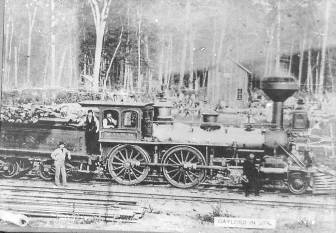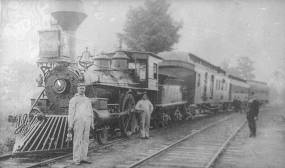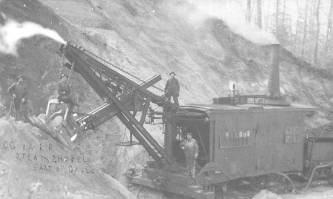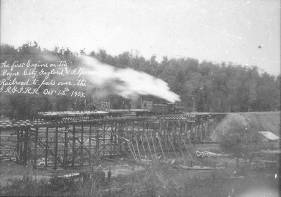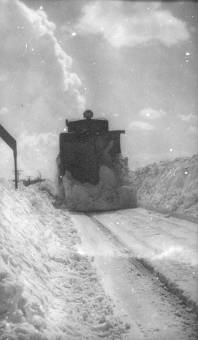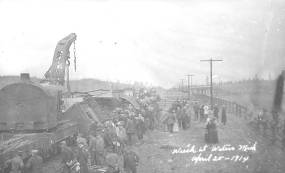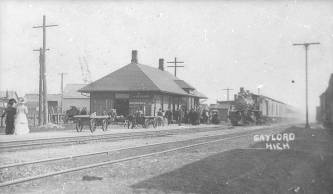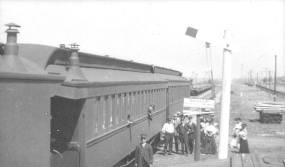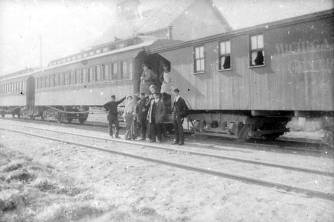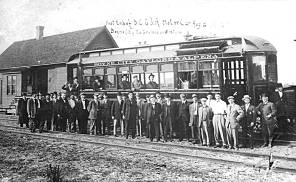|
Railroads Slides 145 - 154 |
|
|
1. The
Jackson Lansing and Saginaw Railroad reached |
|
|
|
2. Another
wood burner hauling passenger cars.
It was an eleven hour all day trip to |
|
3. Grading the railroad right-of-way first was done by the use of horses. Later the use of the steam shovel greatly speeded up the process. |
|
|
|
4. This
railroad trestle which was located west of Gaylord was part of the |
|
5. Trains – both passenger and freight – ran daily. In the winter, snow removal was quite a problem. |
|
|
|
6. Once in a while, a train or some of its cars would jump the track causing considerable damage to freight, passengers, personnel, and equipment. This wreck took place in Waters in 1914. |
|
7. The railroad depot was always a busy and important place. At one time, 14 passenger trains going north, south, east, and west passed through Gaylord daily. Passengers – express – freight and mail arrived or left on each train. |
|
|
|
8. During
the summer resort season, passenger traffic was heavy and the local
trains stopped at |
|
9. Sometimes trains were a combination of freight and passengers. The B.C.G. &A. quite often used a number of such trains. |
|
|
|
10. Before
the B.C.G. &A. abandoned the line in 1933, it operated this
motorized car to handle the passenger service.
The railroad that still operates between |
 |
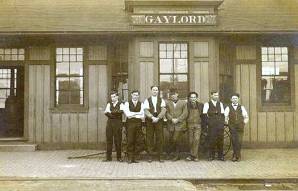 |
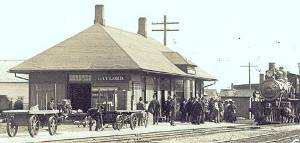 |
|
